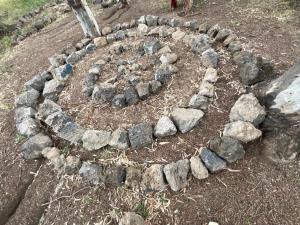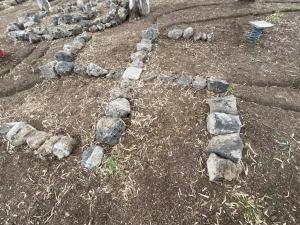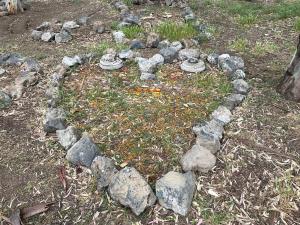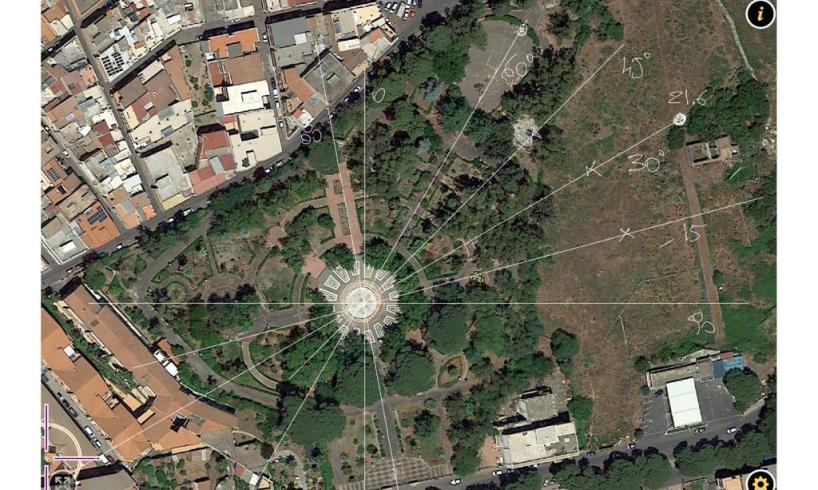Each city has its own fantastic places on which ancient and mysterious stories rest.
 Haunted palaces, enchanted chapels and magical springs. Each city has its apparently dark and impenetrable side and inside these folds, made up of tales, traditions and superstitions, men and gods insinuate themselves.
Haunted palaces, enchanted chapels and magical springs. Each city has its apparently dark and impenetrable side and inside these folds, made up of tales, traditions and superstitions, men and gods insinuate themselves.
In a time full of uncertainties and fears, we all need to rediscover a friendly, maternal and welcoming spirituality. Pandemics and wars – in the last two years – have opened a deep chasm in our society and the conflict between science and religion has become increasingly evident. Man with his knowledge and his knowledge is able to give certain and decisive answers, or should we look elsewhere? A useless and equivocal conflict, often used to alleviate fears and pains, with the wise or the charlatans, in equal measure; and the distinction between these figures is the most fragile point of the whole question.
The places of the sacred are present within the cities and have been stratified since the dawn of time, becoming signs, spaces and hierarchies.
Nature has been for many centuries the center of this world made up of volcanoes, springs, caves, woods and monuments. Nature coincided with the same idea of the divine and nature welcomed the liturgies of organized communities. In our culture, nature has manifested itself in human form and from this derives all our Greek and Christian iconography. Then there are the manipulators, the braggart and the scammers of souls, always and still today. These insinuated themselves into the conflict between paganism and Christianity and exploited the media power of Constantine’s new religion to marginalize the ancient world until it disappeared. But this world also exists in new forms and reappears like the wreck of a shipwreck, like the waves of the sea that do not find a port, a route, a direction but only the need for ritualized existence.
 Within this synthetic framework is placed what is happening in the municipal villa of Paternò, that ancient city dedicated to Hybla (Venus) which was rich in sacred spaces and depository of innumerable cults, many of which have been transfigured into Christianity. Among many, two are perhaps the cornerstone of this mysterious place: Aphrodite and Demeter (Greek version) or if you want Venus and Ceres (Roman version), or the devil (Venus ends up incarnating him forever) and Vergne Maria.
Within this synthetic framework is placed what is happening in the municipal villa of Paternò, that ancient city dedicated to Hybla (Venus) which was rich in sacred spaces and depository of innumerable cults, many of which have been transfigured into Christianity. Among many, two are perhaps the cornerstone of this mysterious place: Aphrodite and Demeter (Greek version) or if you want Venus and Ceres (Roman version), or the devil (Venus ends up incarnating him forever) and Vergne Maria.
Someone got entangled in the ancient liturgies, the more naturalistic ones, the pre-Christian ones. Perhaps because unaware of the fact that in the meantime, after St. Francis, the Catholic Church has also tried to resolve the eternal theological and iconographic conflict between nature and the form we give to God. Someone has simply forgotten to follow the natural evolutions they have brought to the current modernity, made up of infinite differences and glances towards the idea of the divine and its “eventual” impact on everyday events. A form of gaze towards God that does not privilege the search for “awareness” but rather the demand for collection at the counter.
Then inside a municipal villa (the Moncada di Paternò Garden, in the province of Catania) a sanctuary (do it yourself) is built according to the classical forms of antiquity. An enclosure, a wood, the Templar stones to form liturgical designs and secret rituals, marked by the agro-pastoral and cosmological calendar. A few months ago we recorded – in just a few – the evolution of this phenomenon which perhaps finds its evident expression in that dark phase of the pandemic which still terrorizes “rural” communities today. We waited for the summer solstice and the feast of St. John to find confirmation that those stones artfully placed inside the children’s playground were nothing more than the revival of a certain neo-naturalistic ritual of pagan origin, closely linked to the Mother Goddess. , to Demeter and perhaps more.
During the electoral campaign the signs found on the ground seemed to be related to Nazism or even to Satanism (which then exist together); while those swastikas, the spirals, the furrows on the ground, the signs on the trees, the very orientation of the chosen place and much more were nothing more than the “construction” of a pagan sanctuary in the 21st century. We should not be scandalized by the term “pagan” because it means “those who live in the countryside, far from the cities and have not yet converted to Christianity”, therefore almost consistent with our case. In a previous article of 8 May 2022, deliberately cryptic, we had outlined a possible explanation, hiding those intuitions that today we openly show. We were waiting for the confirmation of the solstice of June 21 to expose ourselves with these “provisional truths”. It was useless to exorcise or stigmatize the events, we needed discretion to better investigate the facts. So it was.
From that article I extrapolate a part:
“The villa, among other things, is a very important memory space for the city. The area was first a Moncada estate, then it was used as a public park and for this reason it was designed by Eng. La Russa, the same one that Michelangelo Virgillito commissioned to draw up the project for the sanctuary of the Consolation … Inside there are water fountains, almost sparkling and its subsoil is rich in water, lapped among other things by an ancient conduit water from the area of Patellina (of the Templars). Inside there are some sculptures … but above all the statue of Demeter (Ceres for the Romans), and a work by Pippo Russo and many small legends, fantastic to ancient, even mysterious. Demeter stands out and dominates the perspective space and remembers the sacred nature of this city, its pre-Christian dimension, its agricultural vocation … I seem to guess that the actors of the time in urban and artistic transformations had a greater knowledge of history and a more marked sensitivity, today everything seems to have been forgotten, am I wrong? “
The question remains whether it is a right to exercise a liturgy of this magnitude in a public place without the necessary authorizations.
 Understanding and deepening the anthropological reasons for an increasingly widespread phenomenon – among young people and not only – and which often escapes control. Define a field or a limit, investigating the ethical and moral consequences of this liturgy and whether it has an influence on freedom of thought, that is, if it can slip into plagiarism (although in general many religions are at the edges of this concept). What have the official “churches” done or have not done to suffer these cultural haemorrhages? Does the rotation of the church of Santa Maria dell’Alto on the acropolis, with the entrance passing from west to east, have anything to do with it? Is there a territory of iconographic “reconciliation” that can make the different liturgies coherent by welcoming the sense of the divine common? It will be enough to isolate the braggart of spirituality. These are provocative questions that someone will certainly grasp.
Understanding and deepening the anthropological reasons for an increasingly widespread phenomenon – among young people and not only – and which often escapes control. Define a field or a limit, investigating the ethical and moral consequences of this liturgy and whether it has an influence on freedom of thought, that is, if it can slip into plagiarism (although in general many religions are at the edges of this concept). What have the official “churches” done or have not done to suffer these cultural haemorrhages? Does the rotation of the church of Santa Maria dell’Alto on the acropolis, with the entrance passing from west to east, have anything to do with it? Is there a territory of iconographic “reconciliation” that can make the different liturgies coherent by welcoming the sense of the divine common? It will be enough to isolate the braggart of spirituality. These are provocative questions that someone will certainly grasp.
However, it seems useful, today more than ever, to address the issue with scientific rigor and serenity of mind without igniting the useless witch hunt so dear to the “puritans”. The construction methods of the sanctuary that stands on the water (perhaps to the detriment of the public heritage) and above all without the control of the public body still need to be clarified.
Today it was a propitiatory rite but freedom of worship does not mean that I can do what I want where I want. So let’s get out there and talk about it without prejudice. What really hides this place and the statue of Demeter it contains? Is there still the conflict between Christianity and paganism in this city after 1400 years? What did San Filippo di Agira come to do in Paternò, which demons did he have to cast out? And who are the priests or the keepers of the memory of these ancient rites in the city? Has anyone for a long time been using mysteries and rituals to manage power? Also inside the convent of San Francesco on the acropolis a similar phenomenon took place in 2009, is there a relationship?
These are questions that deserve answers, we look forward to a contribution, even privately. It is also interesting to hear the opinion of you readers.
This “chaos” is an indecipherable fragment of the logos, it should be investigated to bring it back to the laws of gravity. For now we observe spirals, circles, swastikas, fish, bulls, furrows, fruit, solar and maternal iconographies.
Related
The Sanctuary, the undisclosed secrets of the Moncada di Paternò garden – Corriere Etneo

